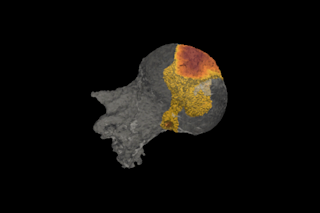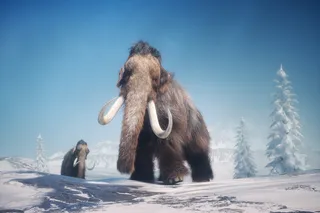A chimp would smoke you in a tree-climbing contest. It’s not your fault — their bodies are built for it, with longer arms that move them through branches efficiently.
Though a human body looks different than a chimp’s, the line between the two species blurs in the archaeological record. Fossilized bones have inspired scientific debate over when our human ancestors gave up climbing trees for good. But a recent peek inside a fossilized hip joint suggests our ancient relatives were scampering up trees more recently than previously thought.
The hip joint, from a human ancestor dating back between about 1 million to 2 million years ago, seems to have a bone structure indicating a lot of time spent with their knees close to their chest. This balled-up position could be interpreted as the kind of crouch needed to climb trees, researchers explain in a new Proceedings of the National Academy ...














